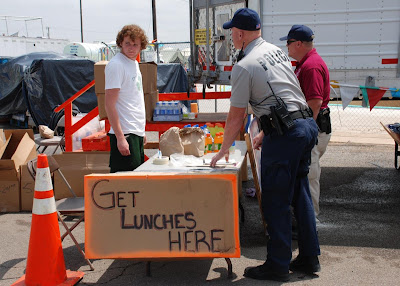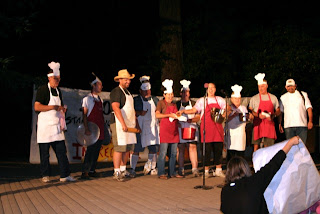 Even though two less volunteers would staff the kitchen this year, I was confident we could do it. This was going to be the third year for this crew. And four staff, including myself, had been on board since the first year.
Even though two less volunteers would staff the kitchen this year, I was confident we could do it. This was going to be the third year for this crew. And four staff, including myself, had been on board since the first year.Sometime before 9 a.m., my lead cook left a message on my cell phone (I missed the call because it was set on silent). CD said she would only be at camp Saturday and Sunday, but expected her husband to be there all week. She was leaving the state Monday to unexpectedly attend to a relative. By early afternoon, both were flying out tomorrow and wouldn't be able to help this year.
I called my camp director mid-morning to tell him the news. At our last communication, he was going to locate an additional volunteer for the kitchen. Then three male counselors backed out and Joe had to focus on replacing them, which became more critical when more boys than girls signed up.
This presents a challenge for Camp 2007. We have become very comfortable during the past two years with 10 and 11 kitchen workers. Although seven is not a critical shortage of workers, it does set us back a few years in terms of progress.
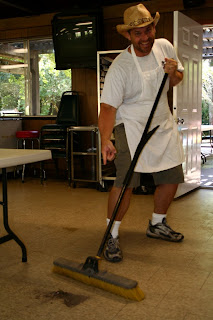 Our first task is to locate one or two additional volunteers. This is a difficult task since most people have made plans for the holiday week -- or are working all week -- and can't take the time off on short notice.
Our first task is to locate one or two additional volunteers. This is a difficult task since most people have made plans for the holiday week -- or are working all week -- and can't take the time off on short notice.From here, it's a matter of digging into our phone books and contacting potential volunteers. EM -- my dining room host and chef-in-training -- Joe and I each know a person who may be able to volunteer on short notice. At this point, we're each waiting for answers. (It looks like we need to establish a list of alternates for 2008.)
I also plan to discuss the following strategies with kitchen staff tomorrow during in-service training:
- Part of the answer is we're going to have to work harder and smarter. This is where training for the past two years is going to payoff. The reality is we may need to work longer hours (a concern for the few with health issues). I plan to pay more attention to prep work and will encourage all staff to help with pots and pans throughout the day.
- It's too late to re-design the menu. The food has been purchased and Sysco is set to deliver our big order tomorrow afternoon. But I'll look at the menu each afternoon and simplify production any way possible.
- I will reorganize work assignments to better use talent and work habits. EM will replace CD as the morning cook, an obvious choice since she is being trained as my replacement. In the process I loose the best dining room host I know. I have few worries with EM at the helm in the front of the house.
- We will look for volunteers from the counselor corps and senior campers (high school age) to operate the dish machine. This may help fill the gap and give my main dishwashers a break.
- Purchasing more paper- and plasticware to reduce the load of the dish machine. The down side is the increased load on the garbage stream. This is problematic for the facility we rent, however. The dumpsters are always full when we arrive and garbage service doesn't arrive until Tuesday morning. EM and I have found one compromise -- purchase paper bowls for soup at lunch each day and for ice cream.
As EM said over the phone this evening, "We'll make it." She's right. And that's a testament to a good crew.

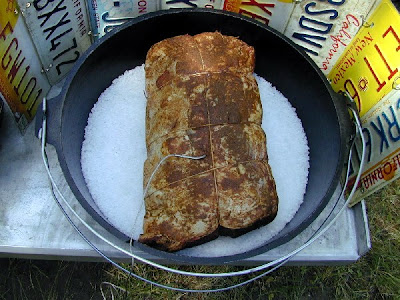
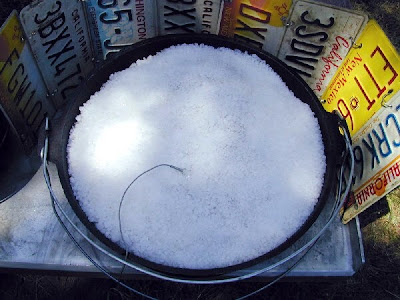
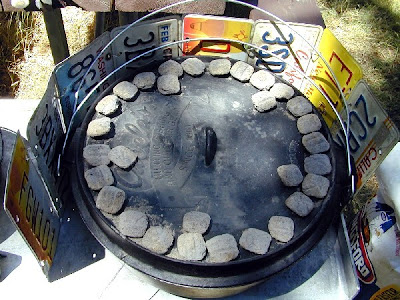
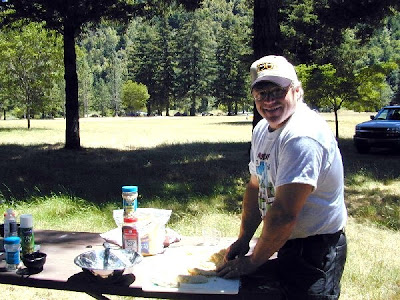
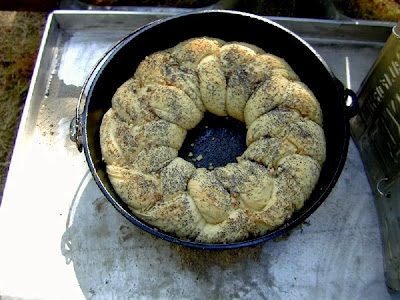 Here's Dean's Hawaiian braided bread. Dean is involved with
Here's Dean's Hawaiian braided bread. Dean is involved with 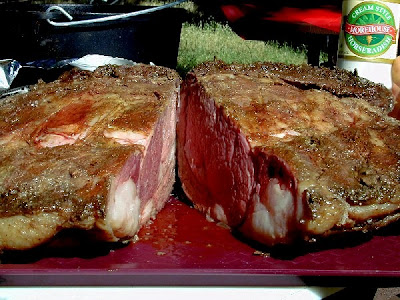 The goal is a perfectly rare rib roast. The thermometer takes the guess work out of determining the internal temperature of the meat. Remove the coals and break the meat from its salt cocoon when the dial reaches 130-degrees F for rare and 140-degrees for medium.
The goal is a perfectly rare rib roast. The thermometer takes the guess work out of determining the internal temperature of the meat. Remove the coals and break the meat from its salt cocoon when the dial reaches 130-degrees F for rare and 140-degrees for medium.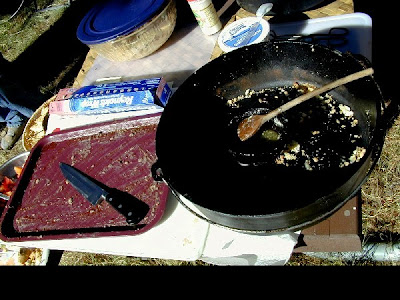 This is what a cook likes to see -- empty pots and pans. That means no leftovers to consider in camp. Now the important question is: Who's going to do the dishes?
This is what a cook likes to see -- empty pots and pans. That means no leftovers to consider in camp. Now the important question is: Who's going to do the dishes?

 I grew up at Camp San Joaquin sleeping in similar tent cabins as this one. The boys at the camp slept in a line of tent behind the Blue Box (kitchen, dining area and main lounge) and pool. For the record, we boys were always miffed as why the girls got to sleep in a hard-walled cabin (called the Long House).
I grew up at Camp San Joaquin sleeping in similar tent cabins as this one. The boys at the camp slept in a line of tent behind the Blue Box (kitchen, dining area and main lounge) and pool. For the record, we boys were always miffed as why the girls got to sleep in a hard-walled cabin (called the Long House).

